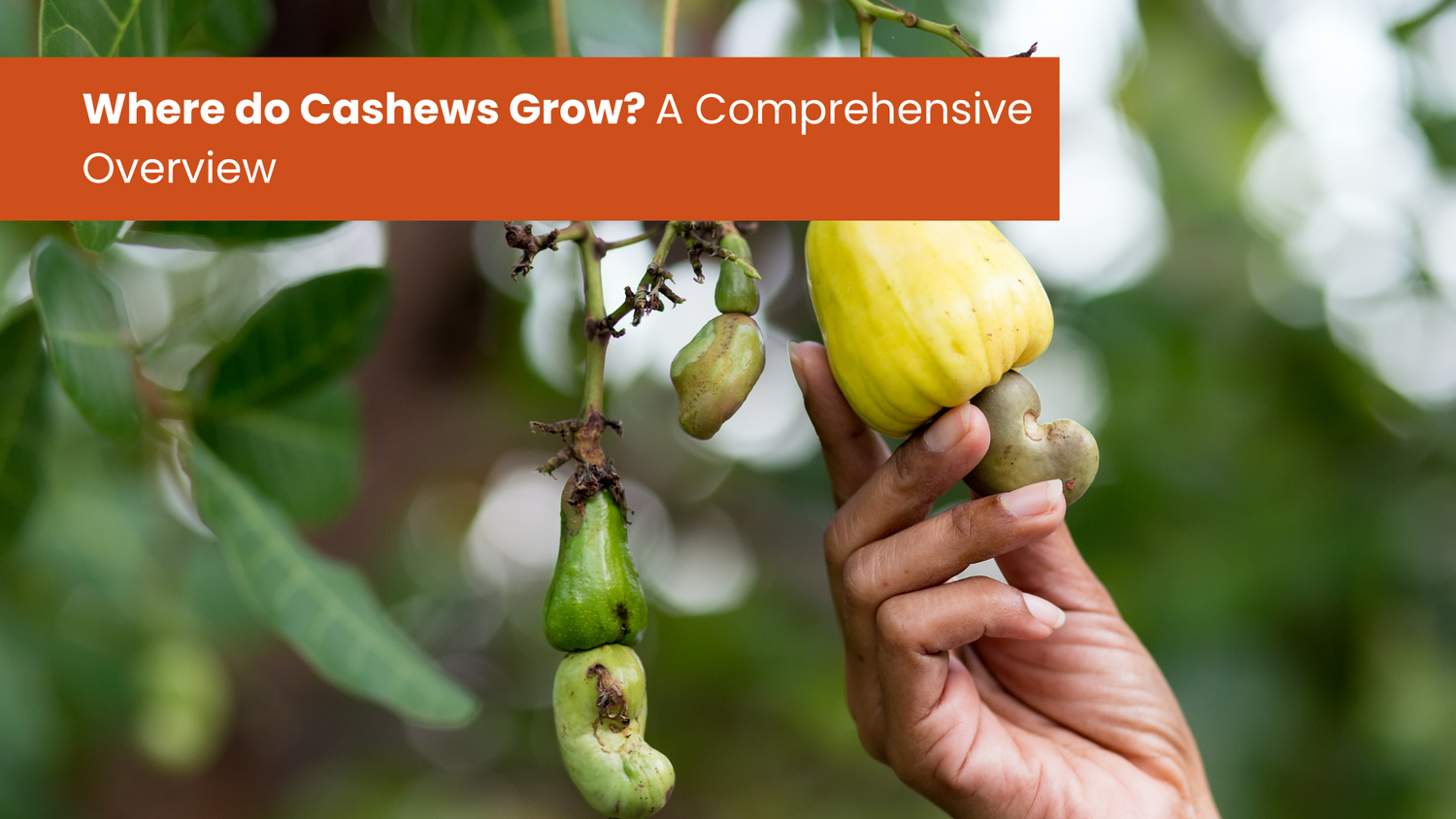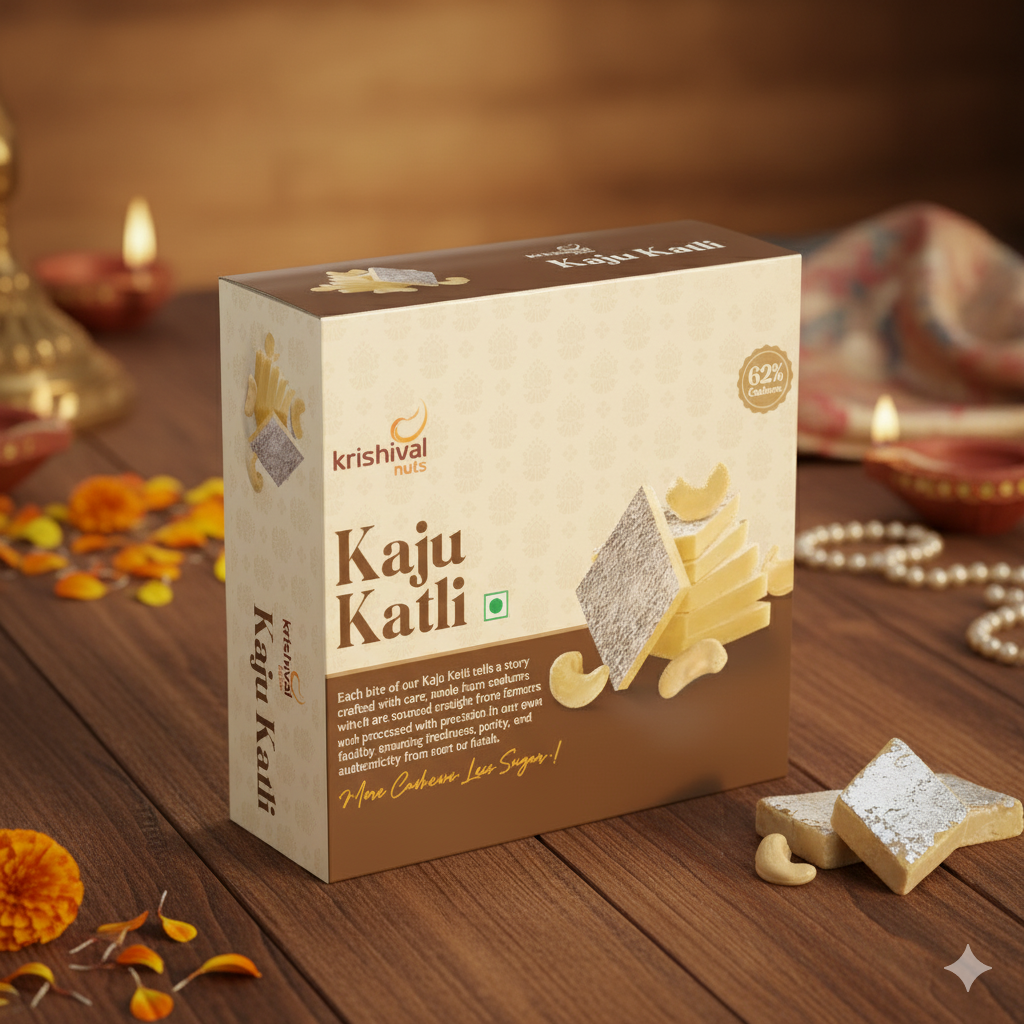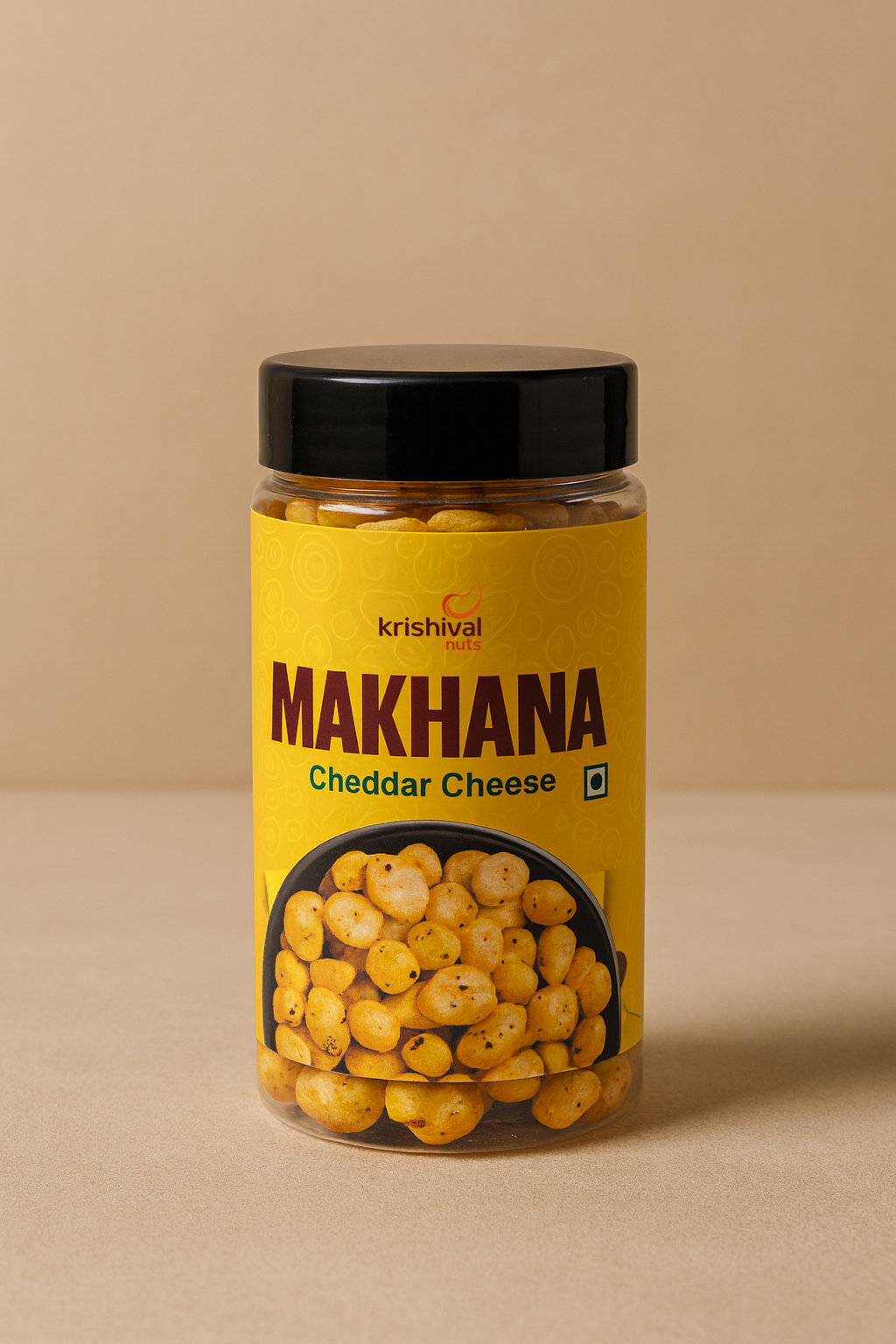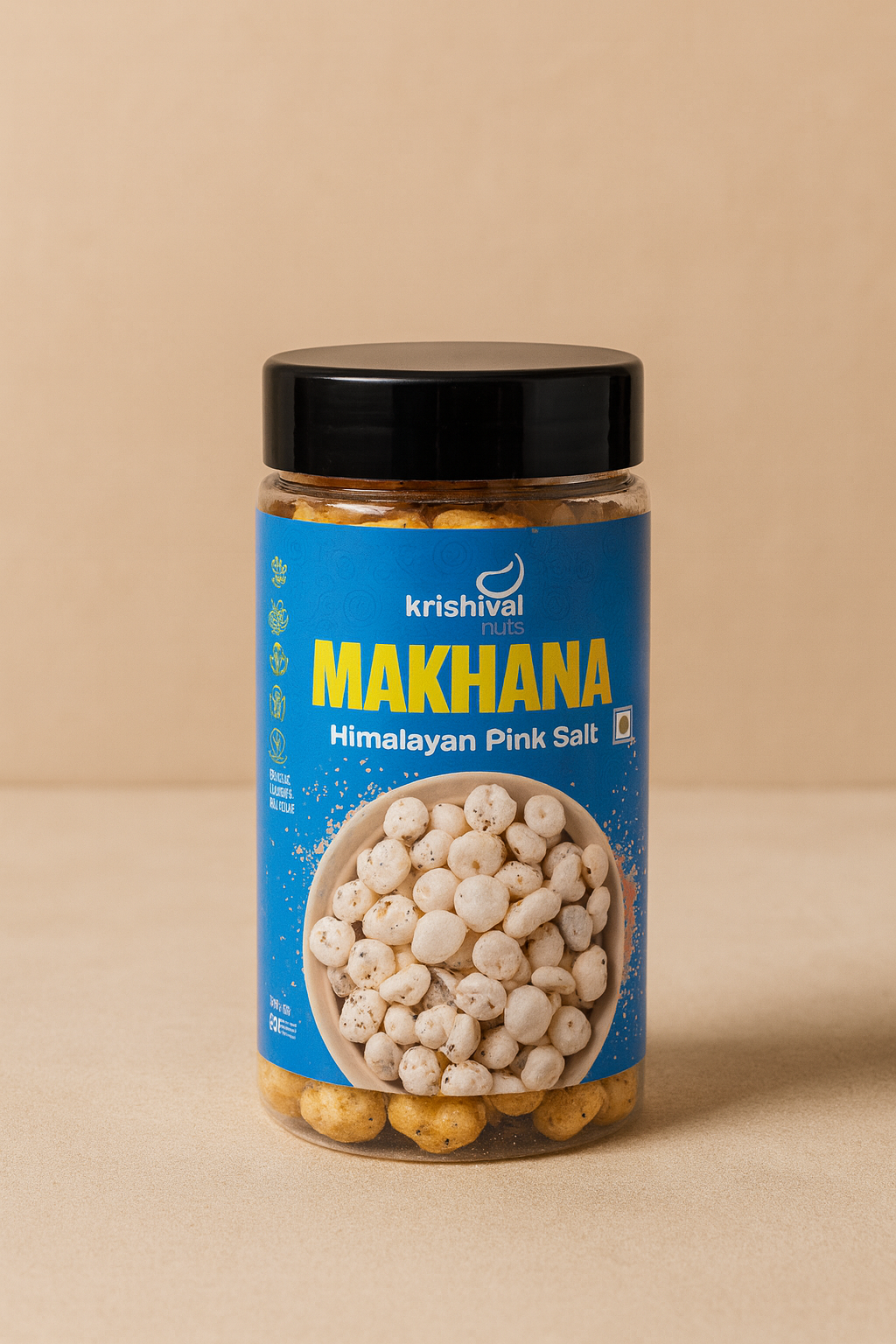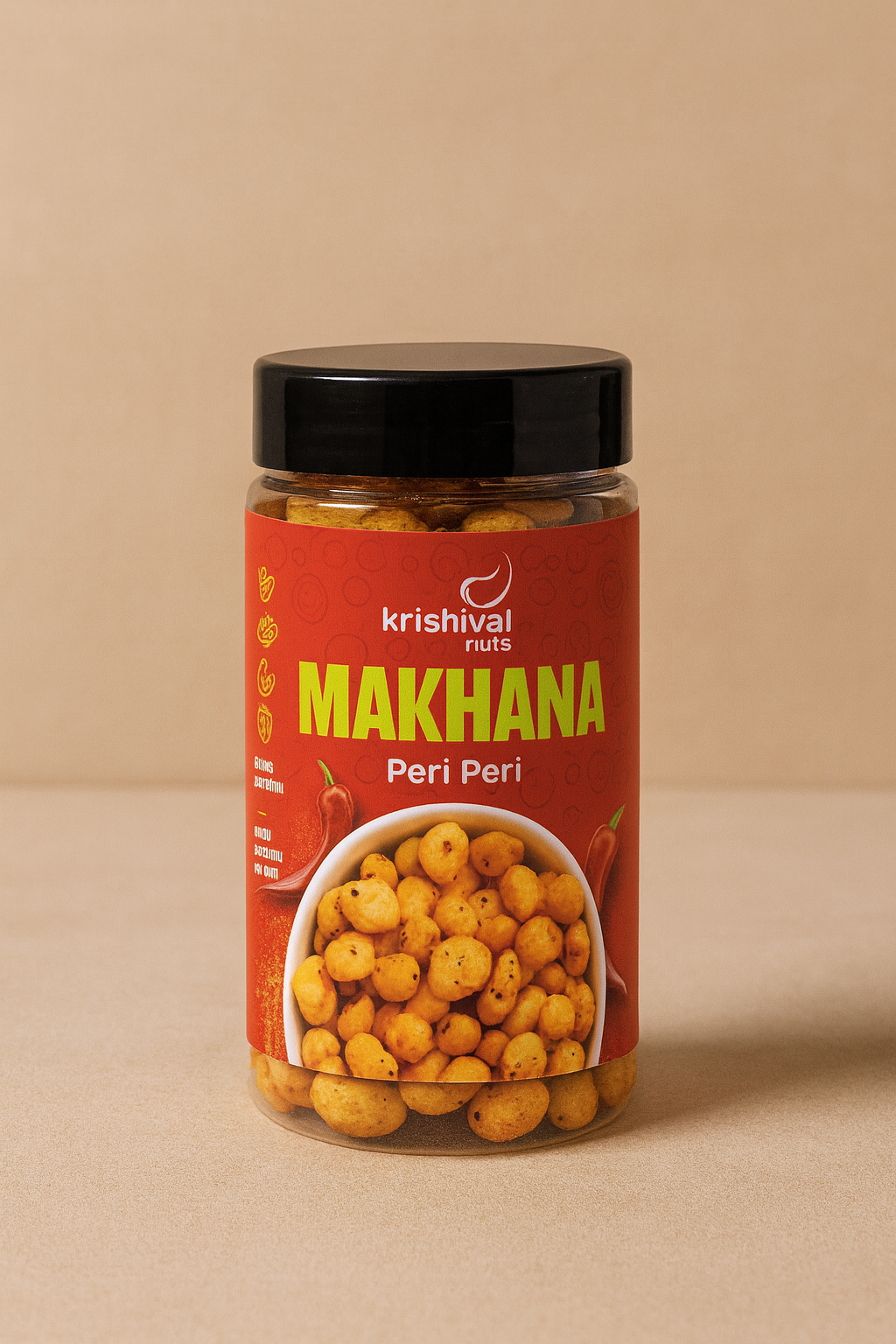Indigenous to northern Brazil, cashews are now grown in many tropical places worldwide. Typically found in nations like Nigeria, Ivory Coast, Vietnam, and India, the cashew tree (Anacardium occidentale) flourishes in warm, tropical climes. From the cashew apple, a distinctive fruit produced by the cashew plant, the nut is extracted. After that, the cashew seeds are removed and prepared for human consumption. Cashews are now a globally known nut despite Brazil's continued importance as a producer. Worldwide demand has forced production to other nations with better growing conditions. This article highlights the regions where cashews are cultivated.
Where do Cashews Come From?
Cashews are native to northern Brazil, where the cashew tree (Anacardium occidentale) was initially grown. Native to the tropical climes of the area, the tree thrives in the warm, humid weather. The Portuguese brought cashews to other parts of the world during the colonial era. Over time, the nut expanded throughout tropical regions and emerged as a significant crop in nations such as Nigeria, Vietnam, India, and Ivory Coast.
The cashew nut, which develops to the fruit's underside, and the cashew apple, a meaty, pear-shaped fruit, are the two separate products of the cashew tree. The nut is most frequently harvested and processed for its edible seed, even if apples are edible and used in drinks and jams. To supply the need for cashews worldwide, the major producers now are India, Vietnam, and several African countries. The nuts are usually treated, roasted, and shelled after harvesting before being packed for consumption. In many cultures, cashews are a snack, a cooking ingredient, and even a component of plant-based milk.
Major Cashew Producing Regions
Globally, cashews are grown in tropical climates, and several nations have emerged as significant cashew producers. West African countries, Vietnam and India are the world's top producers of cashews.
Cashews are produced and consumed most extensively in India, especially in regions like Kerala, Andhra Pradesh, and Karnataka. Indian farmers cultivate cashews for export, and the nation boasts a thriving cashew processing sector. Vietnam, renowned for its effective processing and global trade, is another cashew producer and exporter. The nation has emerged as a major seller in Asia, Europe, and the United States. Countries like Nigeria, Burkina Faso, and Ivory Coast (Côte d'Ivoire) are becoming more significant cashew growers in West Africa. The Ivory Coast is one of the leading exporters because of its large-scale farming operations and ideal environment.
Although output has decreased due to factors including competition from larger producers, other nations, such as Brazil, the birthplace of the cashew, continue to maintain considerable production. On a smaller scale, Mozambique, Thailand, and Indonesia contribute to the world's cashew production. The economies of these areas, which all have pleasant weather, rely heavily on cashews as a chief crop.
How do Cashews Grow?
Cashew trees grow in tropical regions with warm temperatures and soil that drains well. The cashew tree (Anacardium occidentale) yields a distinctive fruit and a nut and can grow to a height of 10 to 15 meters. The tree produces tiny, pinkish, or white blooms that draw pollinators like bees when it starts to bloom during the dry season, which usually lasts from March to May. The fruit, a fleshy, pear-shaped cashew apple, grows on the tree's branches after the blooms pollinate. A hard shell encloses the cashew nut affixed to the bottom of the apple. Since the cashew nut contains hazardous oil in its shell, it is not eaten uncooked. The cashew nut is the tree's seed.
Many crucial phases are involved in cashew cultivation. Farmers collect cashew apples when the fruit ripens, which takes about three months. The outer shell is roasted or baked to make the removal procedure easier once the nuts have been removed from the apples. After shelling, the nuts are dried, sorted, and ready to eat. The cashew tree grows well in tropical regions worldwide because it requires consistent warmth and moisture to produce a healthy yield.
Farming Practices to Cultivate Cashews
Cashew farming involves several stages to ensure healthy growth and a high-quality crop. Tropical regions with sandy, well-drained soils and steady warmth are ideal for cashew tree growth. Good crop yields depend on proper field preparation; farmers frequently remove waste and weeds from the ground. Cashews are typically propagated via seeds, although some growers graft trees to produce trees with better qualities, such as resistance to disease or increased yields.
Cashew trees need proper spacing (usually 8 to 12 feet apart) to provide sufficient sunlight and airflow when planted. Since cashew trees can withstand drought, they require little care, while extra watering during dry spells might encourage fruiting. Pruning removes dead or damaged branches and improves tree structure for better sunlight penetration. Farmers also use integrated pest management practices, including organic pesticides and routine monitoring, to control pests and diseases, such as cashew nut borer and leaf spot disease.
Once the cashew apples ripen between March and June, cashew trees start to give fruit after around three years. Harvesting entails plucking the cashew apples by hand and removing the nuts so they can be processed further. This time-consuming procedure is necessary to guarantee premium cashew nuts for the marketplace.
Nutritional Profile of Cashews
Cashews are a nutrient-dense food with many vital vitamins, minerals, and good fats. Their high content of polyunsaturated fats and heart-healthy monounsaturated fats makes them a great choice. About 157 calories and 12 grams of fat, of which just 2 grams are saturated, are included in a 1-ounce (28-gram) portion of cashews. They are suitable options for people who want to control their cholesterol levels.
With roughly 5 grams of protein per ounce, cashews are also a fantastic source of protein, making them a perfect snack for vegans and anyone trying to up their protein consumption. They are also abundant in essential minerals like copper, manganese, phosphorus, and magnesium, critical for healthy bones, energy production, and antioxidant activity. Additionally, cashews have trace levels of potassium, iron, and zinc. Antioxidants such as vitamin E and other phytochemicals found in cashews aid the body's defence against oxidative stress. They are relatively low-glycaemic since they contain very little sugar—roughly 1 gram per ounce. Incorporating cashews into a well-balanced diet can promote immunological, bone, and heart health while offering a filling, nutrient-dense snack.
How are Cashews Consumed
A versatile nut, cashews can be used as a snack or a cooking element in different ways. Raw or roasted cashews are among the most popular ways to eat them. They are a snack option since they can be subtly salted, spiced, or seasoned to improve their inherent flavour. Cashews are also popular as a garnish for curries and stir-fries or a topping for salads, cereals, and yogurt. In addition to being consumed whole, cashews are crushed into a smooth paste called cashew butter, which can be used as a fruit and vegetable dip or spread over bread or crackers. Another usage is in plant-based cookery, where they are used to make vegan cheese, cashew milk, and creamy sauces.
Additionally, cashews are used in baked products like cakes, cookies, and granola bars to give them a nutty flavour and crunchy texture. Trail mixes and energy bars frequently contain cashew bits and chopped almonds for a handy and easy snack. There are also savoury nibbles like spicy nut mixtures and confections like cashew brittle that contain cashews. There are different ways to eat cashews, making them a versatile ingredient in many cuisines.
Diets in Which Cashews Fit
Because of their nutritional advantages and adaptability, cashews can be a beneficial supplement to diets. Cashews fit into the following diets:
-
Mediterranean Diet: Packed with good fats, cashews are a great complement to the Mediterranean diet, which places a strong emphasis on plant-based foods, nuts, seeds, and olive oil. A key component of this diet is heart health, supported by its monounsaturated fats.
-
Plant-Based and Vegan Diets: Cashews are a good protein substitute for vegetarian and vegan diets since they are high in protein, good fats, and vital vitamins and minerals. Cashew-based goods, cashew cheese, and milk are well-liked dairy alternatives.
-
Paleo Diet: With its emphasis on natural, unprocessed foods that mimic what our predecessors would have consumed, the paleo diet permits cashews.
-
Cashews fall within the parameters of this diet because they are organically grown and high in nutrients. Portion control is essential because of their high-calorie content.
-
Low-Carb/Keto Diet: Although cashews include carbohydrates, people on a low-carb or ketogenic diet can still benefit from eating them in moderation. Their protein and healthy fats keep you feeling full for longer.
-
Diet Without Gluten: Cashews are a perfect option for people with celiac disease or gluten sensitivity because they are naturally gluten-free.
Adding cashews to these diets can improve nutrient intake, flavour, and texture.
Conclusion
The cashew tree bears cashews, and the nut grows inside the apple. The prime manufacturing regions are Brazil, Vietnam, and India. Cashew farming entails managing pests, growing in well-drained soil, and providing adequate irrigation. Hand-harvested nuts undergo meticulous processing to eliminate harmful shell oil. Cashews are a great source of protein, vitamins, minerals, and good fats. Cashews can be processed into butter and milk, eaten as snacks, or added to food. They are suitable for many diets, such as gluten-free, vegan, and ketogenic diets. To conclude, cashews are a healthy and adaptable addition to many cuisines.
Frequently Asked Questions
q1. Is cashew a nut or a seed?
Technically, cashews are seeds rather than actual nuts. They derive from the cashew tree's fruit, the cashew apple. The hard shell that encases the seed is removed before it is eaten. Although they are frequently classified as nuts because of their culinary use, they are cashew apple seeds.
Is cashew a legume?
Cashews are not considered legumes. While cashews are members of the Anacardiaceae family and grow on trees, they are similar to legumes in that they represent a component of a plant's reproductive system. Beans and peas are examples of legumes that usually grow in pods. Cashews are seeds from the cashew apple and not legumes.
What kind of a nut is cashew?
Cashews are not nuts but "drupes". The hard outer shell of a drupe shields the seed inside the fruit. The edible portion of cashews is the seed; the fruit, or cashew apple, is frequently thrown away or used in different ways. Despite this, cashews are commonly referred to as nuts in cooking.
Which are the leading cashew-growing regions?
Tropical and subtropical climates are the main cashew-growing zones. The top three countries for production are Ivory Coast, Vietnam, and India. Nigeria, Indonesia, and Brazil are other important cashew-growing nations. These areas offer the perfect warm climate and growing conditions for cashew trees, which flourish there.
Where is cashew grown in India?
The tropical coastal areas of India are the prime locations for cashew cultivation. Maharashtra, Goa, Kerala, Karnataka, and Andhra Pradesh are important cashew-producing states. Goa and Kerala are especially well-known for their extensive cashew farming. Cashew trees flourish in these coastal regions because of the warm, humid climate that makes them the perfect place to grow.
What are the ideal conditions for growing cashews?
Tropical and subtropical regions with temperatures between 25 and 35°C (77 and 95°F) are ideal for cashew growth. They need sandy or loamy soils that drain well and moderate rainfall (600–1,200 mm). Cashew trees can withstand drought and require full sun. To thrive and yield high-quality nuts, they need little exposure to frost and grow best at elevations under 1,000 meters.
Which country grows the most cashews?
Vietnam is the top producer of cashews internationally, surpassing other countries in production and export. It contributes significantly to global cashew production, followed by Ivory Coast and India. These countries, along with others like Brazil and Nigeria, are significant players in the cashew sector, contributing to worldwide supply and commerce.

